To date, in gardening, there is a huge number of decorative shrubs that can diversify the landscape design of any site. Some of them feel perfectly in terms of our climate and have long gained love and recognition of gardeners. However, there are cultures that still amazed with their fabulous and magnificent views and are rare in garden sites. Such decorative plants can be attributed to the Three-bladed almonds, which is one of the brightest and most beautiful small trees.
Seeing almonds Three-bladed at least once, you forever love this culture and will become its loyal fan. Almonds Three-blade, landing and care for which is quite complex and time-consuming, will become a real pearl of your garden, just to make a little effort and take care.
In this article, we give the features of the almond three-bladed and we describe its most popular varieties. And also we note in more detail all the most important nuances of agrotechnical growing.
Features and description of Three-blade almonds
Almonds in all people are associated with delicious and fairly expensive nuts, which are grown in the southern regions. The almond plant is part of the village of almonds from the kind of plum and a large family of pink, but his variety of almonds three-bladed has long been related to different types and categories. For many years, scientists attributed this plant to the skin of the plum, the genus of almonds. However, disputes have always arose about any decisions and judgments. Only in 1959, almonds three-bladed was thoroughly studied by Botany Pakhomoyova, which delivered this plant for a number of signs to a separate race. Due to the fact that this genus was called Louiseania Three-bladed. Almonds of this species were known many more centuries ago and grown in nature in the territory of the Mediterranean and Central Asia. It is China to date today is the birthplace of this beautiful plant. In the provinces of Hebei and Chardun, this decorative plant is considered to be a precursor of spring, which bright and lush flowering causes universal joy and waiting for a new life.
From the territory of China in the middle of the 19th century, the Three-bladed almonds hit the territory of Europe, namely in England. Since those times this plant began its long journey throughout the continent. To date, the Three-bladed almonds can be found in California, the Czech Republic, Slovakia, Moravia. With proper care, this decorative shrub can be raised in the Krasnodar Territory, in the Voronezh region, in the Primorsky Krai, the Sverdlovsk region of Russia. It is more difficult to plant on your site this is a beautiful tree with gardeners from the central part of our country, but everything is possible.
Three-blade almonds, almonds Three-bladed terry, plum terry, Louisiania, Chinese terry plum, Japanese cherry - all these names belong to one variety of almonds, which is characterized by the most striking magnificent blossom.
Three-blade almond description:
- Three-blade almonds is a type of dicotyledtic flowering plants, which is a perennial decorative small tree or shrub.
- Louiseania is a spring-driving bone plant, which is related to a plum and apricot.
- Three-blade almond grows in the form of a small shrub or a tree, which many form in the form of a strain. In height, the plant can reach 2-3 meters.
- Almond branches are thickly adjacent to each other, which allows you to form a compact and spherical crown if you want to grow this plant as a stramborm culture.
- Three-blade almond crown is very branched.
- The leaves of this variety of almonds are three-bladed, leathery with a large-grained edge. The color is dark green with a large number of vests on the bottom sheet plate. Grow leaves with beams on fruit shoots and appear after the start of flowering.
- At the beginning of May, the flowering of thundered almonds is begins, which lasts about 2.5 weeks.
- During flowering, the bustard of almond looks just gorgeous. It seems that this plant is covered with a huge pink bedspread. It is because of fabulous flowering that this species is considered the most beautiful and decorative.
- Almond flowers in the form of simple and terry, blooming two pieces together. During flowering, the branches are tightly covered with flowers, while the leaves appear later. The diameter of one flower on average is 1.5-2 cm.
- The color and color of the thundered almond flowers are dilated: light pink, dark pink, crimson.
- After a bunch of shoots, fruits appear, which have a rounded shape and in diameter reach 1 cm.
- The fruits of almond three-blade intolerable, so they cannot be eaten. This plant is used only as decorative. However, in ordinary gardens it is still quite rare.
- It is considered a frost-resistant plant that can withstand our climate and frost to -30 degrees.
A variety of decorative forms and grades of almond three-blade
Almond Three-bladed can be of different shapes and varieties, which will allow you to diversify your landings and make a plot bright and unique.
Three-blade almond shapes
- Form of "captivity". Plants of this group are considered the most popular among the gardeners due to their decorativeness. They are distinguished by the most striking and beautiful appearance. In the height, this shrub can grow up to 2 meters as much as possible and is a rather colorful plant. The bush blooms in the beginning of May with beautiful and terry flowers, which in diameter reach about 0.4-0.5 cm. Flowers consist of a large number of petals and sewers. The color of the inflorescence pink. The fruit of this variety is slightly oblong shape and burgundy color.
- Form "Kiev". This form of Three-blade almond is also very popular among gardeners. It is characterized by high increasing - the plant can reach 3.5 meters in height. Plant flowers are less terry, one flower can consist of about 10 petals, while the previous type of flowers can consist of 40 petals. Flowers have a dark pink shade and a pleasant almond fragrance. Blossom starts at the end of April or in early May. This form is distinguished by the fact that bloom begins earlier than the leaves bloom. The whole process lasts about 7 days.
- The form of "Atropurpur". Plants of this species differ in different sizes, can grow low and high. Flowers are smaller and not so terry, consist of fewer petals. Color petals Gentle pink-purple with raspberry tint.
- Form "Petzold". Plants of this species bloom in semi-world flowers of gentle pink color. Unlike the rest of the almonds of the Three-bladed, its leaves have an oval form.
Almond grade three-hazing
- Almond grade Three-blade "Wessenka". In height, this plant can reach about 1.5-2 meters. Its appearance is very much like plum. It blooms quite large colors of the terry shape, which consist of a large number of petals of a gentle beige-pink shade, which brightens as the bud opaque. This variety is distinguished by resistance to some diseases.
- Almond Three-blade Rosenmund. The plant of this variety is characterized by quite compact sizes of the bush and low growth. It blooms quite a long time in comparison with other varieties - almost 3 weeks. Flowers are distinguished by a terry form with petals of gentle pink.
- Almond grade Three-blade "Tanya". The plant of this variety is distinguished by low growth, but despite this, it has high decorativeness. The branches in the almond Tanya slightly drooped, large terry flowers bloom. The diameter of one flower is approximately 2.5-3.5 cm. One flower consists of about 40 petals that are slightly twisted at the ends. Petals have bright raspberry color.
- MOST "CITY". Plants of this variety are very similar to Sakura. In the height, the shrub reaches medium sized - approximately 1.5-2 m. Branches of Kistica. It is distinguished by grade in early blooming small, simple in the form of the color of the gentle pink color. Blossom is longer and abundant.
- Almond grade "Punchova". This variety is a hybrid of domestic selection, grows in the Primorsky Territory. It is a low bush with reprehensive branches, on which large terry flowers of a bright raspberry shade are blooming.
- Grade "Joy." It is a small tree or shrub with a rather rare crown. It has an early blossom, which begins at the end of April and ends at the beginning of May. Flowers appear before the dissolution of the leaves and have a terry large form, which in diameter reaches 4 cm. The color of petals is dark pink.
- Sort "Snow Wormura". This three-blade almond variety is distinguished by major terry flowers, whose petals are painted in a gentle pink shade. This shade changes to the cream under the end of flowering.
- Grade "Memory of Mahmeta". Plants of this variety bloom with light-pink medium-sized colors.
Three-blade almond reproduction: the most common ways
The reproduction of the Three-blade almond has its own characteristics and nuances, knowing who, you can easily grow this beautiful plant on your site. There are a large number of breeding methods, one of them are simpler and accessible to amateur gardeners, others are much more complicated. Among them you can select the reproduction of almonds from the bone, cuttings, tanks and root thrust.
The reproduction of almond three-blade bones
- This method of reproduction is the most time consuming and not always pleases with its results. First of all, it is worthwhile that not all the grades of the Three-bladed almonds give fruit, which are a source of seeds or bones for the stock, which will be in the future the cuttings of varietal plants will be vacated.
- It is best to use freshly plated plant seeds, but some varieties require preliminary stratification of planting material before planting.
- The hardening process must be carried out in a cold room or in a refrigeration chamber in a container for vegetables. It lasts stratification for about 4 months.
- Summer almond seeds Three-blade can be in spring and autumn directly into open ground.
- For sowing, make small grooves in a predetermined soil in advance, 8-10 cm deep, while the distance between seeds should be about 10-12 cm.
- After germination of seedlings, it is necessary to provide them with full care.
- When seedlings reach a height of 50 cm, it is necessary to trim at an altitude of 10 cm all branches and transplant them to a permanent place. Only after that you can use them for vaccination.
- You can also try to grow a full-fledged plant from seeds, but there is the likelihood that all maternal signs will be lost, and the flowers will not be so terry.
The reproduction of almond three-blade vaccine
- This method is the most suitable for independent breeding of almonds three-bladed.
- First of all, it is necessary to take care of growing grounds. Winter-hard-resistant grades of almonds, such as three-bladed or ordinary, as well as plum, Alych are suitable as good.
- Next, find a high-quality and healthy camp in the form of a cutlery with shaped eyes. Before vaccinating from the prepared cuttings, it is necessary to remove all casting, leaving only the cutters.
- The vaccination is recommended to spend in the period of active in spring or summer.
- First of all, it is necessary to carefully clean with dirt and dust with a rag. Next, take the eyepiece knife or just normal and make an incision in the shape of the letter T a little above the root neck. Before the edges of the bark, move a little.
- Next, from the prepared cutter, it is necessary to cut the shield, i.e. A piece of bark with the kidney and a piece of wood. The length of such a shield is determined taking into account the length of the outbreak.
- Carefully insert the shield into the incision and press the edge of the cortex to it, then climb the vaccination place with a tape or scotch. At the same time, remember that the kidney does not need to close.
- After the kidney is good, you can remove the ribbon.
The reproduction of almonds three-blade
- In this way, you can also multiply almonds three-bladed.
- It is possible to carry out this method at the beginning of the spring until the moments of vegetation or in the coexpensive.
- If the almond bush grows on your site with low-omitted shoots, select the lowest and healthy.
- Make around the bustle shallow grooves around the bustle and go to them selected shoots, then fix them so that they do not rise up.
- Pour them soil so that only the upper part of escape remains above.
- The location of the shoot of escapes with soil regularly water and loosen. Only a year later, young seedlings can be separated from the parent plant and transplant to a permanent place.
The reproduction of almonds three-blade cuttings
- First of all, it is necessary to prepare the planting material for which the three-bladed almond tongue is needed to cut the cuttings with a length of 15-20 cm.
- Cuttings need to cut from the top of the weird shoots. At the same time, consider that at least two nodes should be at each cutlets.
- Before rooting the cutlets, it is necessary to lower one day into the solution of the rooting agent or growth stimulator.
- In the cool greenhouse, it is necessary to prepare the soil, which should consist of peat and sand.
- After planting cuttings, it is necessary to regularly care for them before their rooting, which occurs in about a month.
- When seedlings grow sufficiently strong roots, they can be transplanted for growing on the bed.
Preparation before planting thundered almonds
Landing and care for almonds Three-blade not differ in particular complexity. However, this plant is still considered to be exotic in our area, so it is worth a thorough preparation so that you exactly have grown a chic plant.
Stage 1. Selection of grade and almond seedlings Three-blade
- The choice of a healthy and strong seedling is the key to getting a beautiful and blooming almond plant.
- You can buy Three-blade almonds in specialized garden centers or nurseries that are professionally engaged in breeding plants. So you will be confident in the purchased planting material.
- When buying from professionals, your seedlove will be accurately acclimatized to the weather conditions of your region.
- Do not buy landing material on the natural markets and from strangers from the hands.
- Choosing a variety, take into account the desired height of the future plants and the color of the petals. In another, all the grades of almond three-bladed are great.
- Before buying, carefully inspect your seating material. Since almond seedlings are most often sold in containers, check the soil. It should be clean and moistened. At the very same plant should not be damaged or dried plots.
- It is important to make sure that the plant does not hurt and there are no pests on it.
- Also consider that the seedling is best to buy a three-year-old, as it is best formed the root system and it will quickly come true.
Stage 2. Selecting a place to land the almond threat
- For the full growth of almonds three-blade, solar open areas are perfect.
- There may also be a light half of the day, where it is always sunny.
- It is important to provide a plant with a reliable shelter from drafts and winds, from this almond may die. This is especially true of winter cold winds.
- Attentively, take care of the selection of the area in terms of groundwater. They should be at a decent depth, as this plant does not endure flooding. That is why it is recommended to plant their seedlings on a small elevation, so that the spring flooding does not hurt them.
- When choosing a place to land, focus on your landscape and the garden composition planned.
Stage 3. The choice and preparation of the soil for planting the almond three-blade
- Three-bladed almonds do not require special conditions relative to the composition of the soil, however, to obtain a beautiful tree will pick up a more fertile plot.
- Do not land almonds on clay soils with poor composition.
- It is best to give preference to loamy soils with a slightly alkaline or neutral reaction.
- Previously before boarding the selected area, you should thoroughly switch, remove weeds and break the soil.
Three-blade almond planting technology
- The three-bladed almond planting can be carried out in spring and autumn, however, gardeners are recommended to give preference to autumn disembarking.
- It is also important to remember that you need to plant a few mandala seedlings, as they are pollinated cross.
- Prepare landing pits, the depth of which should be at least 30-40 cm, and the width is slightly more earthen coma on the root system of plants.
- Planting pits Place apart from each other at least 3 m.
- At the bottom of each pocket, pour the drainage layer to prevent moisture stagnation. As a drainage, you can use broken bricks, small stones and gravel.
- Next, pour a layer of fine sand and place a stick for a support in each pit.
- Next, carefully remove the seedling from the container and place the pits on the bottom.
- Put the saplings of the soil mixture consisting of a sheet of land, humus, sand and upper layer of soil.
- After landing, every seedling is rolled up with water in such a way that the root neck is on the same level with the surface.
- After that, let the saplings and inspire the soil around them. Mulch use peat or humus.
Agrotechnology growing almond threat
Caring for almonds Three-blade is not much difficult, but you have to make a lot of effort to grow a beautiful tree that will delight you with charming colors.
Three-blade almond watering
If you are growing in the plot of the almond core threesnial tree, then watering it is moderate. Such seedlings do not like much moistened soil and can withstand small droughts. If your seedling is vaccinated, it is important to grow in a constantly moistened soil. At the same time, it is important to pour almonds three-bladed. Water needs to be pouring strictly under the root, as various diseases may appear when entering the crown.
Thoring almond Three-blade
Since almonds three-bladed can perfectly grow on poor soils, no fertilizers do not need a lot. The first feeding is carried out immediately after flowering. At this time, it is best to make a little fruit. A week after this feeding, bring urea under each seedling. The next feeding is carried out in the fall, when the superphosphate must be made under each bush and switch the soil.
Three-blade almond trimming
Pruning should be carried out every year so that the plant has a well-groomed and beautiful appearance. First of all, in the spring it is necessary to carry out sanitary trimming, during which all broken and damaged shoots are removed. Also remove all the old branches that have reached 5-6 years of age. Every year it is necessary to make forming trimming so that Croon plants have the right outline.
Three-blade almond diseases
Since pests are very rarely damaged by almonds three-bladed, the main enemy of this wonderful plant is one disease - moniliosis. This fungal disease of all bone crops that penetrates the plant through the flowers and germinates there. It hurts wood strongly, after which the tree can completely dry out. To combat, you can use the spraying of the foundazole during flowering. You can use trimming, during which all the current shoots are cut into 2 kidneys and are burned.
Stock Foto Almond Three-Blade in Landscape Design
Three-blade almonds are considered the most beautiful and vivid representative of a kind. Putting this magnificence on its plot, 2-3 weeks you will be surrounded by a fluffy pink cloud of fragrant colors.


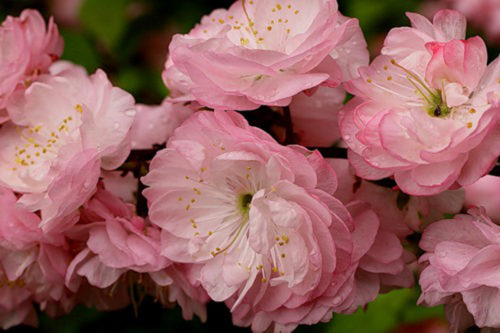
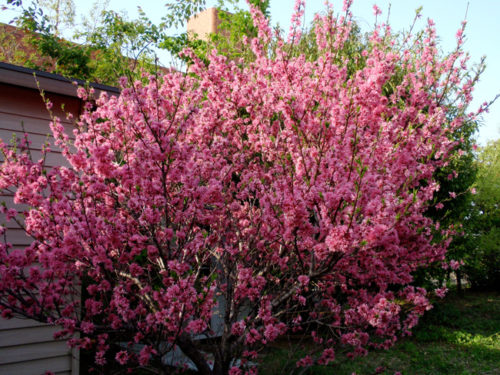
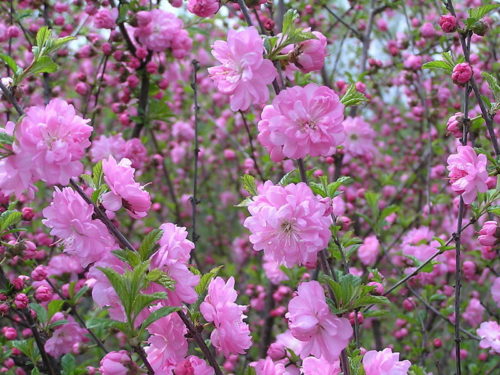
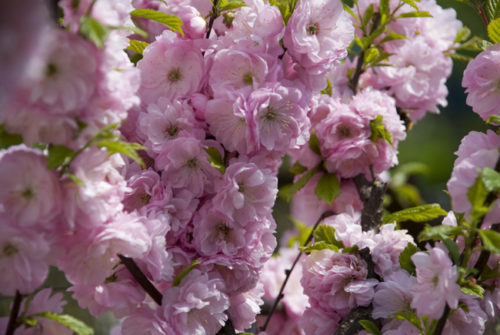

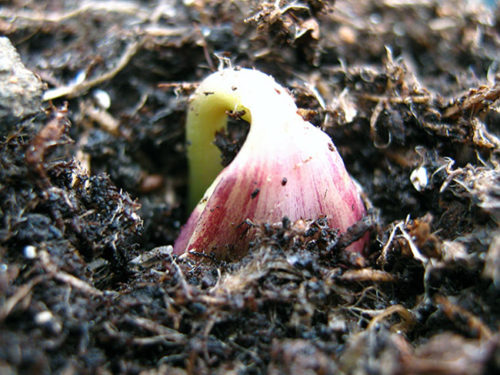

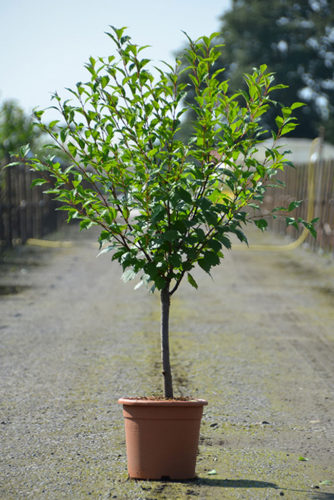

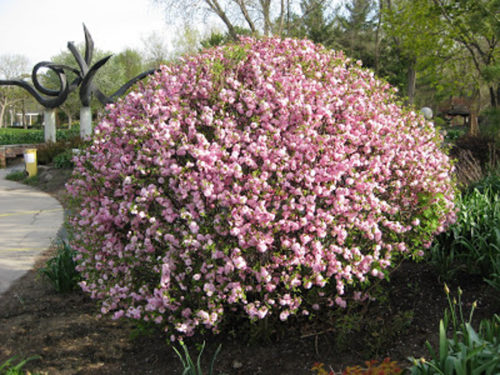
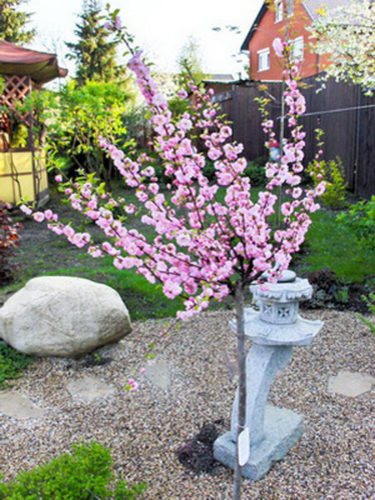
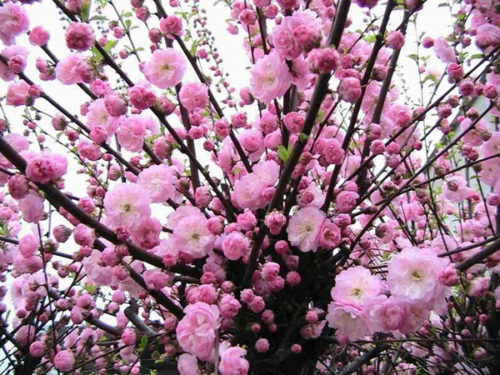
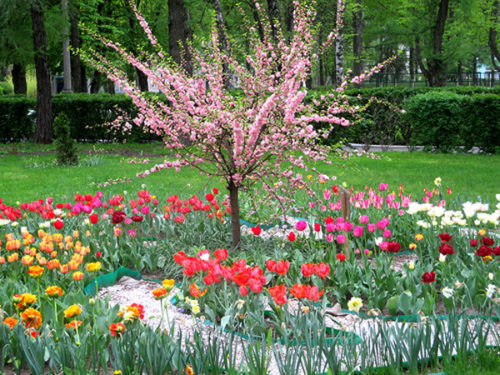
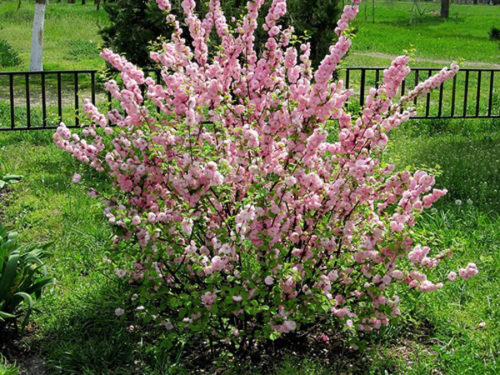












 Start a discussion ...
Start a discussion ...